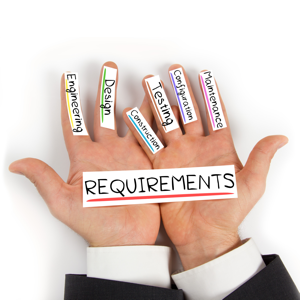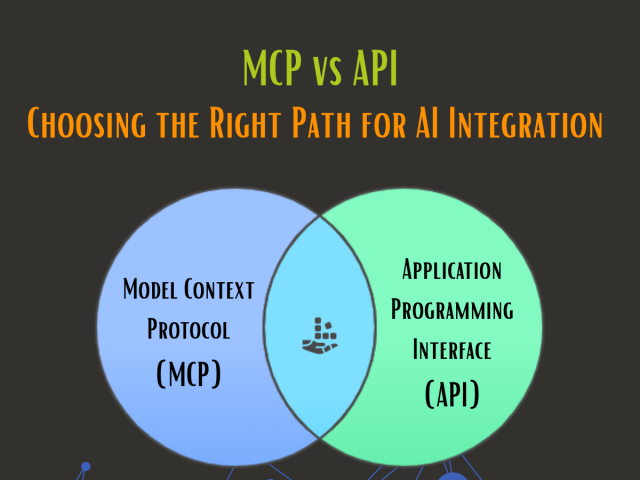In the world of project management, the importance of sound requirements planning cannot be overstated. It serves as the compass guiding every project towards success, offering clarity, accessibility, and unwavering accuracy. By threading precision into each requirement, we bring the project’s objectives into sharp focus, making the outcome not just tangible but also measurable. The requirements strategy and plan are the blueprints that encapsulate user expectations, guidelines, and the pivotal milestones that lie ahead.
In this blog, we embark on a journey deep into the heart of requirements planning. We’ll explore the essential steps, from collecting and documenting key functionalities to charting actions and devising approaches for testing and traceability. Along the way, we’ll dissect the common missteps that can hinder your progress and offer valuable insights into overcoming them.
Furthermore, we’ll delve into the various categories of requirements, each playing a distinctive role in shaping the final project.
Common Mistakes in Requirements Planning:
- Failure in the allocation of right resources and skills: This mistake often arises from underestimating the importance of having the appropriate resources and skilled individuals assigned to the project. It can lead to inefficiencies, delays, and ultimately, subpar results.
- Inadequate documentation of changes and communication with the team: Failing to maintain thorough documentation of evolving requirements and effectively communicating these changes to the team can result in misunderstandings, conflicting expectations, and ultimately, project derailment.
- Unanticipated problems: Even with the most meticulous planning, unforeseen challenges can arise. Whether it’s technical glitches, unforeseen dependencies, or external factors, not accounting for these unexpected issues can lead to project delays and increased costs.
- Unnecessary complexities due to mismanagement: Overcomplicating the requirements due to poor management practices can lead to a convoluted project scope. This can make it difficult for team members to understand and execute their tasks efficiently.
- Lapsed commitment towards stakeholders: Maintaining ongoing engagement and commitment from stakeholders is crucial. Failing to do so can lead to misunderstandings, delays in decision-making, and ultimately, a misaligned end product.
- Missing Standard Procedures: Neglecting to implement established standard procedures can lead to inconsistencies, inefficiencies, and a lack of uniformity in the requirements planning process.
- Ownership issues: Unclear ownership and accountability for different aspects of requirements planning can lead to confusion and lack of progress. It’s important to clearly define roles and responsibilities from the outset.
- Uncalculated risks: Neglecting to assess and plan for potential risks can lead to costly setbacks. It’s imperative to conduct a thorough risk analysis and develop mitigation strategies to safeguard the project’s progress.
- Unprofessional approach: Maintaining a professional demeanor and approach in requirements planning is paramount. Failure to do so can lead to breakdowns in communication, strained relationships, and a less productive work environment.
- Missing restructuring of the plan: Failing to adapt the requirements plan as needed throughout the project’s lifecycle can result in an outdated, impractical roadmap. Regularly revisiting and adjusting the plan ensures it remains relevant and effective in guiding the project towards success.
How to plan for good Requirements? Is it tough?

Planning for Effective Requirements: Is it a Daunting Task?
While requirements planning may seem challenging, it’s important to emphasize that it’s not an insurmountable feat.
In fact, with the right approach, it’s possible to achieve Zero Conflict Requirements Planning.
Gathering Requirements: To embark on a successful requirement planning journey, it’s crucial to take a comprehensive perspective. This means considering everything from the overarching business objectives to the stakeholders, software users, and the ultimate utilization of the project. It involves a meticulous study of existing systems, identifying their strengths and weaknesses, evaluating current procedures, and establishing sustainable practices while defining needs with utmost precision.
Eliciting Approach: One effective strategy is to list the pivotal questions that serve as guiding lights in the requirements planning process:
- Why is this project essential and why should we invest in it?
- Is this the right time for the project, or can it be postponed for better readiness?
- Are there anticipated technical challenges that need to be addressed?
- What are the potential benefits for both the organization and its employees?
- How do the efforts required compare to the expected returns on investment?
- Do we have the necessary skill set in-house, or do we need to acquire additional resources?
- What are the expectations from the new software, and can they realistically be met?
- Will key stakeholders and users support this change?
- What are the financial implications, including both costs and potential savings?
- How adaptable is the software to emerging technologies, and what are its potential limitations?
- Are we aligned with current software trends, and does the business have the capacity to adapt to change?
- Have clear milestones been established, and how will we adhere to the proposed schedule?
By addressing these questions, we establish a solid foundation for requirements planning, ensuring that every aspect is considered, evaluated, and accounted for. This meticulous approach sets the stage for a successful project, minimizing conflicts and maximizing the potential for a seamless execution.
What are different types of requirements in Requirment Planning?
Securing the interest and finding the significance of the requirement and its impact.
Business Requirements: Requirements planning for every business is a unique experience. The dependencies and expected behavior of the software, definite processes, and explicit actions related to it.
User Requirements: If the users have some software what is that they want to change or keep unchanged, are they utilizing all the functions which you have listed as requirements, the consistency in using the features of previously existing in the system that you are about to recreate and finally strength of members who use particular and peculiar features.
System Requirements: It should list the following for requirements planning.
- Design of system and sub-system
- Operating system and computer architecture
- Processing power
- Memory
- Storage
- System health
- Stability
- Key performance issues
- System abilities
- Peripherals
- APIs and drivers
- Hardware and software purchase or updates
- Parameters for hierarchy rights and controls
Functional Requirements: It is a description of services, which software must offer to meet the documented functionalities. It can be explicit behavior of the system for what it is developed, to be precise how it should operate under specific condition. Functional specifications consists details of operations, logic handling by system, data manipulation, data processing, performance of tasks, required user interaction with the application and allows you to check whether the application is fulfilling all the requirements. It is mandatory to create functional requirements, best e.g., transactional level, report generation, authorization levels, and audit tracking. Type of testing for functional requirements are Systems Integration, API testing, logic related issues, etc.
Non-Functional Requirements: They are hard to capture and are not mandatory but help you to verify the performance of the software. The focus is on user expectations than the requirements. It describes the general characteristics of a system. For testing, the criteria are performance, stress, security, and usability.
Change Management: Requirements planning must have an organized document that lets you track the stages of requirements fulfilled. The development, testing, implementation, and user satisfaction can needs comparatives with ratings. The ready-to-use templates, formats and components of the defined necessities of a project are included in requirements traceability matrix (RTM). The indexing and numbering of against the requirements help in planning and checking the status. It makes monitoring simpler with the logs that crosscheck the status as of now and the next stage of the system. The stakeholders and developers both have transparency and clarity. With the development of the software and its shaping, you can view and verify the growth and its direction. It adds the scope of rectification prior to the final release and during the testing stage.
Migration to New System: Requirements planning cannot be complete without covering the transition details. The time required to shift from old to new system, prerequisites of transition, the current state of system, roles of contributors in the process of migration, skill gaps, data conversion, data transfer, and assessment of the solution.
Cease Requirements: Once the parties agree on the requirements, they should sign the document and define the deliverables. Signing the document increases the sense of responsibility and the agreed workflow helps in case of deviation. Expected delivery includes the features, minimum acceptable workability, release dates and names; dependencies, performance acceptance, user acceptance, and final delivery to the client etc. decide all and everything. Mention how to deal with the things that arise out of scope.
- Design Testing: The testing requirements planning holds an important position. The design of a product needs to be attractive, user-friendly, productive, result-oriented and maintain the secrecy of background processing.
- Quality Assurance: Uncompromised quality is a sign of a good requirement planning and conversion to reality. Quality issues can cost you and make everyone rework. Low work quality affects productivity, hinders the development process, delays the testing and releases. Customer satisfaction and prior to that work satisfaction hamper when the team efforts go in vain. The document can have a set of expectations about the attitude towards the quality maintenance.
Conclusion –
Requirements planning is the compass that guides projects to success. It brings objectives into focus and ensures clarity and accuracy. Avoid common mistakes like resource allocation and communication lapses.
AnArSolutions’ Approach:
We take a comprehensive view, considering business goals, stakeholders, and user needs. We study existing systems, identify strengths and weaknesses, and define needs precisely.
With the right approach, Zero Conflict Requirements Planning is achievable. Remember, the requirement document is your canvas; fill it with goals, examples, and conditions. Interlink and interlock requirements for a seamless system.
In the end, a well-planned requirements strategy and plan are the blueprints for successful projects. They set the foundation for success.




